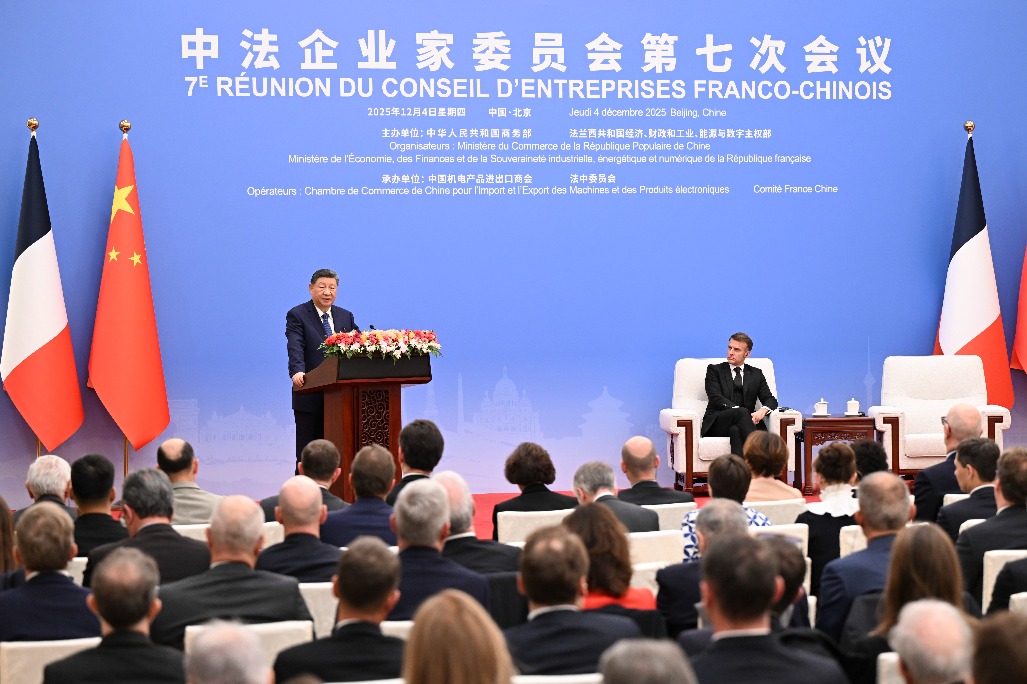East Asia's 'old' challenges need innovative solutions
By Park Dan-bee | China Daily Global | Updated: 2024-01-12 07:11

Demographic changes, such as aging populations and declining birth rates, pose challenges as well as offer opportunities for industries and economies. To overcome the challenges and seize the opportunities, especially to achieve long-term economic sustainability, economies need to implement policies promoting innovations.
An aging population creates various macroeconomic challenges, including a potential decrease in productivity due to the declining working-age population. As the old-age dependency ratio rises, the burden of healthcare expenses and pension systems increases. And as the uncertainty over income increases, consumption and economic growth decline.
In East Asia, the Republic of Korea, China and Japan face significant challenges due to population aging. Compared with other advanced economies, Japan encountered the population aging problem at a slightly earlier stage, starting in the mid-1990s. As Japan's percentage of elderly population to the total population increased, it impacted the country's economy, leading to a contraction in domestic demand and decline in both production and consumption, and hence economic growth.
Japanese enterprises expanded their outward FDI in China and some Southeast Asian countries, and used overseas labor to boost production and maintain their competitiveness when the country's working-age population began to decline. Charles Goodhart and Manoj Pradhan write in their The Great Demographic Reversal that innovative Japanese companies have actively increased outward FDI, leveraging cost advantages from inexpensive overseas labor to maintain their cost competitiveness and expand their market share, as outward foreign direct investment and intra-regional cooperation were important to stimulating production and maintaining competitiveness.
During the same period, China integrated into the international trade market and emerged as a key hub of the global manufacturing network, supported by the availability of abundant labor, thus providing a cost-effective workforce. Recognizing the potential benefits, Japanese companies increased their outward FDI in China. The increase in Japanese companies' outward FDI was aimed at mitigating the negative impact of the decline in Japan's working-age population.
Now China faces the aging population and declining working-age population problem. And the global economy faces the challenge of declining trade since protectionism practiced by certain economies is fragmenting global trade and global supply chains. Given the current global economic situation, therefore, the chances of boosting growth through outward FDI may be limited.
Yet it is important to promote regional economic integration and strengthen collaboration with countries that have significant growth potential.
Employing automation and developing artificial intelligence are necessary to offset the negative impacts of the demographic changes. According to a study by Daron Acemoglu and Pascual Restrepo, published in the Review of Economic Studies in 2021, the impact of declining demographic dividends can be offset by adopting automation technologies, including robots. Countries with rapidly aging populations such as the ROK and Japan are leading the way in using robots to address the shortage of labor.
Companies in the ROK, and Japan, such as Hyundai Motor, Samsung and Toyota have a technological advantage in the field of industrial robots and hold many patents in robotics, according to a Statista report in 2023. In China, enterprises such as Baidu, Tencent and the State Grid Corporation lead the AI and machine learning process as they hold the largest number of patents in these fields. In fact, the ROK, China and Japan are taking steps to boost their competitiveness in the field of AI and robotics.
AI and robotics will play a crucial role in stimulating productivity and innovation by compensating for the decline in the working-age population, and the subsequent increase in productivity will in turn raise the demand for labor by creating new employment opportunities.
AI, robotics and other advanced technologies give rise to new tasks within their realms and across other sectors. Therefore, it is necessary to implement cooperation policies to support enterprises that promote innovations by increasing investment in research and development, facilitating startup incubation, and building a foolproof system to protect intellectual properties. And since AI and robotics may replace certain jobs, it is essential to address the potential challenges they may create in the labor market and work out strategies to ensure a balanced and inclusive transition.
The author is an associate professor in the Department of International Trade at Kangwon National University.
The views don't necessarily reflect those of China Daily.
If you have a specific expertise, or would like to share your thought about our stories, then send us your writings at opinion@chinadaily.com.cn, and comment@chinadaily.com.cn.
























